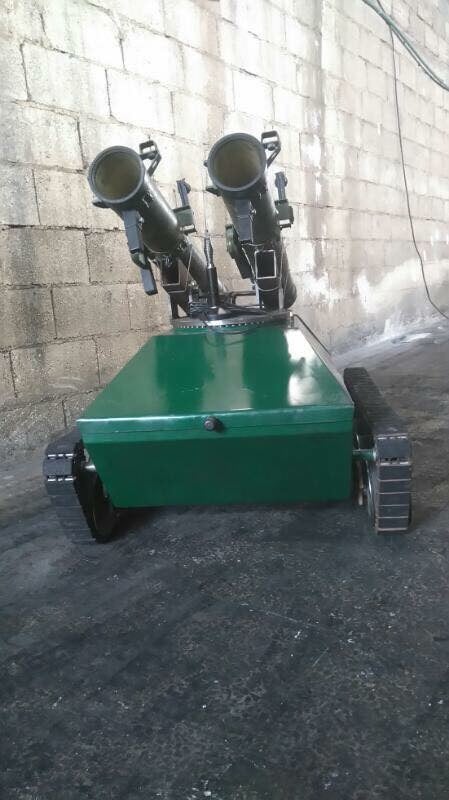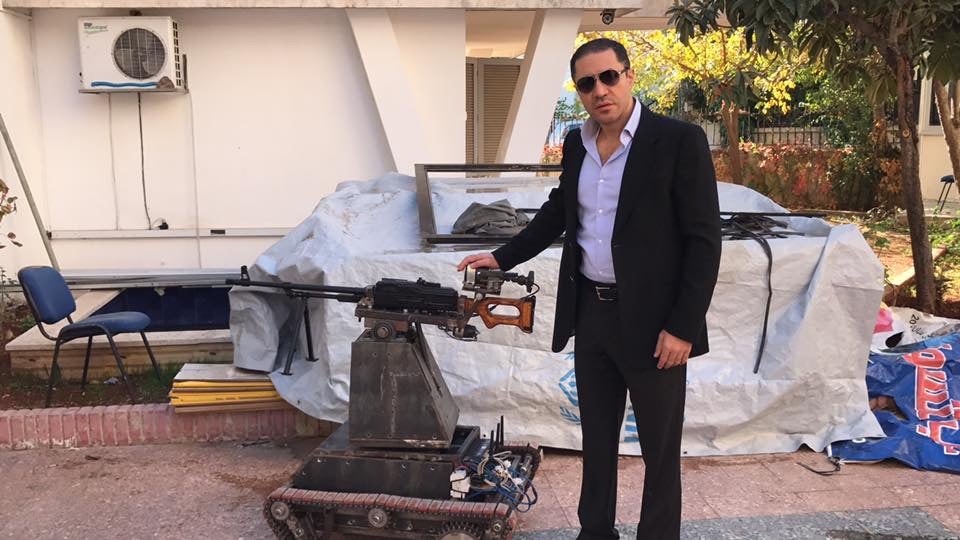Two Arabic news sources (Military-Zones, Middle East Panamera) have published independent posts about a remote control vehicle currently at least in the developmental phase of design within the highly contested Aleppo province in Syria. The designers are in areas still in control by Assad’s Syrian Arab Army, and have been working with the SAA in the hopes of a purchase. Originally it was constructed due to Syrian troops taking casualties in the current fight against numerous rebel and terrorist groups operating throughout Syria and especially in Aleppo province. The group mentioned backing the project is the Aleppo Chamber of Industry, however, this is from the Google Translation and is most likely a translation error instead of any actual organization.
Given the circumstances described, working under less than ideal conditions amid the chaos and violence going on in the province. According to the reports, it has been over a year in development. Currently, it appears to be a tracked RC vehicle with a camera showing the direction of movement and fire. It has been observed with PKM machine guns mounted, in addition to an unidentified rocket launcher (readers chime in?). It appears that all RC controls are basic in that it can probably propel itself in any ground direction, the weapons mounted might have elevation and traverse capabilities, and it can be fired remotely. Other than this, it doesn’t appear that it can change out ammunition, remotely charge a PKM or clear a malfunction, or climb over the rubble and debris found in an urban terrain.
Nonetheless, the vehicle is certainly an achievement given the situation it was created in. However, I’m not sure if it will offer itself as a battlefield multiplier to the SAA due to the constrictions listed above, and due to the nature of the fighting. Having one of these RC vehicles is great, but it could be easily outflanked or maneuvered simply by moving to ground high enough where it couldn’t traverse to, or by having at least two angles of attack on the vehicle. Essentially a platoon or company commander would have to have a number of these vehicles to cover each other, in addition to troops who understand the capabilities and limitations of the device, very similar to infantry troops fighting alongside armor. When done correctly it can be a force multiplier, but if done incorrectly the results can be catastrophic.
 Your Privacy Choices
Your Privacy Choices


